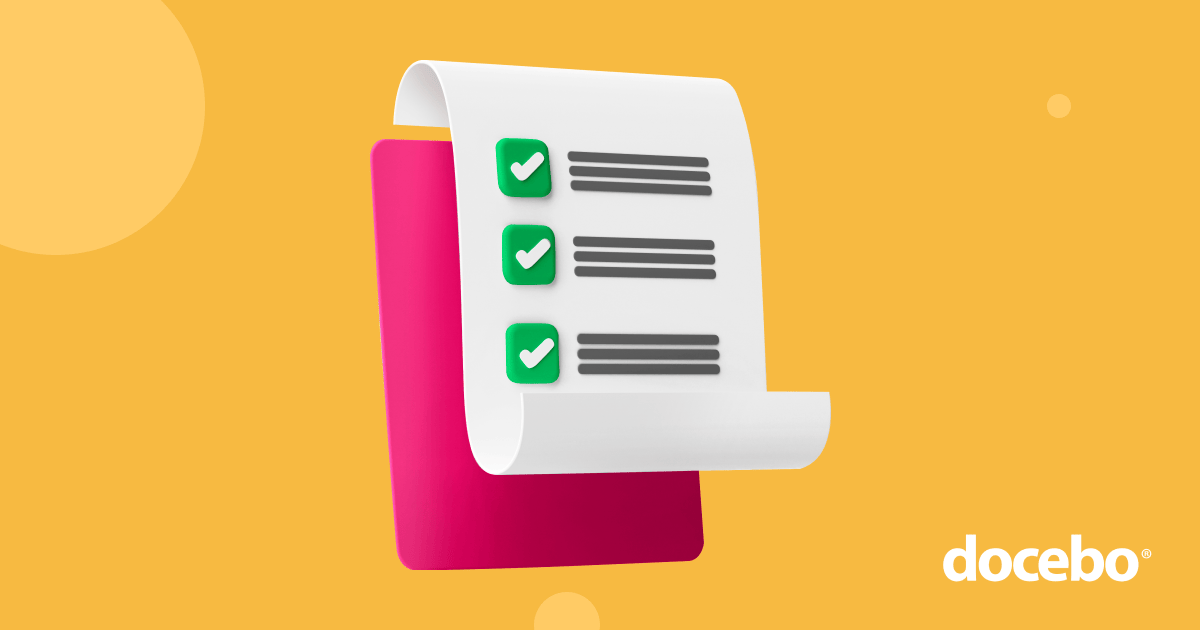Selecting the right learning management system (LMS) for your organization requires careful consideration and strategic planning.
Whether you’re shopping for a new LMS or are looking to replace a legacy system, the process can be long, tedious, and confusing.
An inevitable part of the LMS selection process is comparing LMS vendors.
With over 700 LMS solutions available, it’s essential to shop around until you find the right fit for your organization’s particular use cases and LMS requirements.
Submitting a Request for Proposal (RFP) to LMS vendors can help efficiently evaluate and compare LMS providers, which will ultimately refine and shorten the LMS selection roadmap.
Here’s everything you need to know about LMS RFPs.
What is an LMS RFP?
A learning management system (LMS) request for proposal (RFP) is a document that companies send to potential LMS vendors when they’re looking to launch a new e-learning project.
This document should include company information as well as details on projects you want to get off the ground and expectations about the solution you need. This includes info such as technical requirements and desired LMS features.
The LMS request for proposal tells potential vendors about your company and its needs. Based on the RFP, the LMS provider can determine if they can meet your requirements and reply with a realistic proposal.
Now that we have the basics down, let’s dive deeper into the purposes and benefits of the LMS request for proposal.
What is the purpose of the LMS RFP template?
The main purpose of an LMS RFP is to communicate your requirements to potential suppliers who can provide the right solution for your project, company, and of course – your learners.
Without an RFP, you’d be stabbing in the dark at random LMS providers who may not be able to help you.
Maybe their pricing plans are wrong for you, or the level of technical support is off.
With a request for proposal, you’re establishing clear expectations and a joint understanding of your needs with potential LMS vendors.
The RFP also becomes the baseline for the eventual contract and is a historical record if any disputes arise during contract negotiations.
Now, let’s take a look at the key reasons why you should always send an RFP.
1. It helps you define your LMS needs
Let’s be very clear – picking the best new LMS or migrating to a new LMS won’t be a cheap proposition. You’re about to drop thousands of dollars for an e-learning solution.
With an RFP, you outline exactly what you want to achieve with an LMS and put it in writing. So, it’s a great way to clarify goals for yourself and your team.
After you start the project, the RFP will also help evaluate its effectiveness: have you achieved your learning and development goals or not?
Trying out random solutions and seeing if they stick is not a good strategy. Remember those thousands of dollars …
2. It helps you better understand LMS requirements
As with any project in your company, starting a new e-learning project is about getting from point A to point B. There are many ways to achieve that, but not all are equal.
Working on your RFP, you’ll be able to drill down into what you need from an LMS.
Do you need the solution with the most features if you won’t use them?
That would be like paying for a Lamborghini when all you need is a Toyota.
Clarifying the LMS requirements lets you know which features are essential, which are nice-to-haves, and which you can safely ignore.
The result is a balance between your needs and your budget.
3. It helps you understand limitations
Let’s say your deadline for the full-scale launch of the e-learning solution is two months from now.
After a nice presentation by a potential LMS vendor, they tell you near the end of the meeting that their platform would take six months to deploy.
Now you’ve both wasted your time.
A request for proposal lets you understand your limitations better, with a focus on:
- Deadlines
- Budget
- Number of users
- Specific tech that you need (e.g., on-site installation, e-commerce capabilities, advanced security features, etc.)
In the next section, you’ll get some tips on how to ensure your RFP is successful.
Ensuring RFP success
According to Talented Learning’s John Leh, you should think of an RFP as “an invitation to participate in the purchasing process for any type of software, goods or services. It is a document buyers send to relevant suppliers, outlining the business need, buying parameters, and requirements.”
For the RFP process to be successful, you will have to thoroughly outline the learning, technical, security, implementation, and customization requirements for your LMS project.
This step of the process is extremely important but it can also become tedious.
We are currently updating our RFP template, so stay tuned for the latest version!
Now Over to You
Together, these two documents will significantly streamline the LMS selection process and help ensure you choose the right LMS for your needs.
Remember, choosing the best LMS for your organization is a big responsibility. This learning platform will fuel learning and development activities in your company.
It’s important to be very clear about your requirements and needs with potential vendors, and that’s what the RFP helps with.

